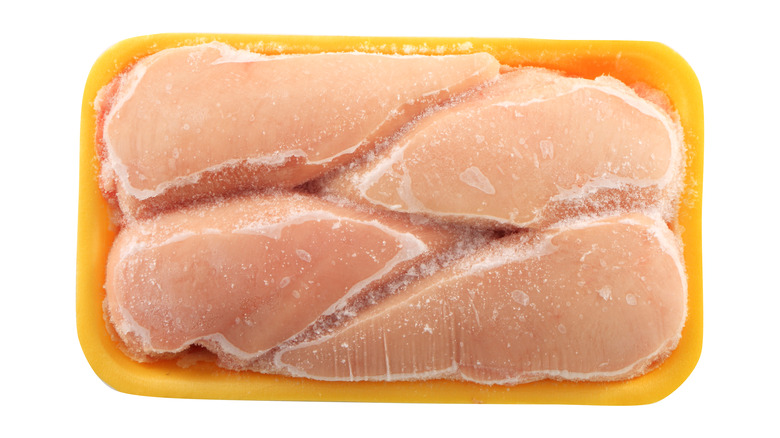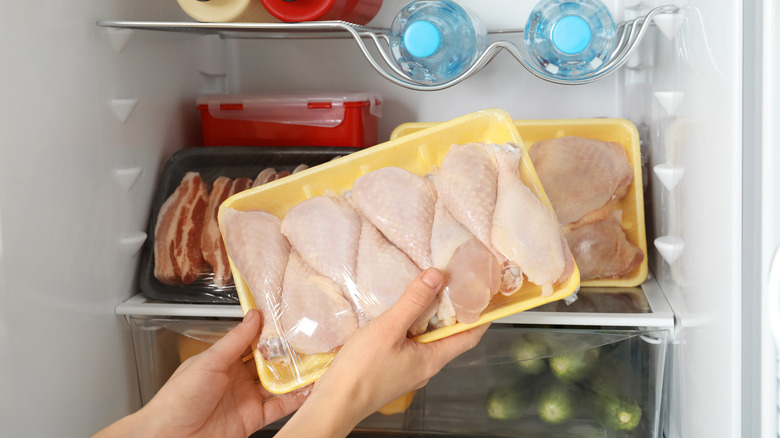The Recommended Method For Thawing Meat In The Refrigerator
You're lying in bed before you doze off, making a mental list of everything you need to do in the morning before you head to work. "Move chicken from freezer to fridge to defrost" falls right above "grab drying cleaning" in priority but just below "pack gym clothes."
Then, as you're about to run out the door the next day — 10 minutes behind schedule with wrinkled shirts in hand — you remember the chicken. You sprint back to the kitchen, grab the ice-cold meat, swing open the fridge and throw it on the top shelf, making it back to your front door just as it's inching to a close. Phew! Dinner is safe. Or is it?
Not so fast. You just made a faux pas in haste that has the potential to cost you a lot of the other items in your fridge as well as time spent deep cleaning, as The Pioneer Woman notes. So what exactly did you get wrong, and what should you do next time?
Catch the juice on the loose
Of all the options for defrosting frozen meat, the refrigerator method is your best bet at staying safe and keeping its temperature out of the USDA's danger zone — between 40°F to 140°F, when bacteria begins to grow. You want to keep the meat colder than 40°F until it's in the pan or oven and above 140°F. However, you're not in the clear yet. As a package of frozen meat defrosts, condensation forms (per USDA). If there are any tiny rips or tears in the plastic of the package or container the meat is in, raw juices along with that condensation will begin to drip right onto anything inhabiting the shelves below.
There's a simple solution that will save you from this potential literal mess. The Pioneer Woman suggests placing the frozen meat on a jelly roll pan (a baking sheet with a rim) or a plate (just make sure it's larger than the package). You could also use a lipped tray. Place this on the bottom shelf of your refrigerator. The added protection will catch any of the juices that may leak as the meat thaws, preventing widespread contamination. So next time you make that mental to-do list for the morning, add an extra few seconds to properly care for that meat and show respect for its neighbors in the fridge.

